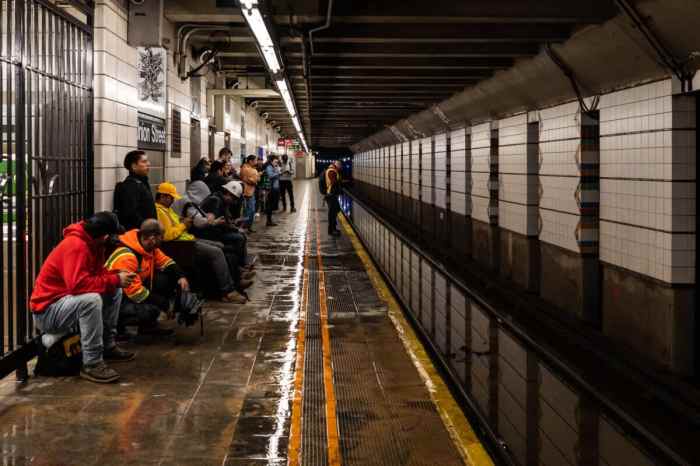The most expensive and most visible project of SEPTA’s nearly $200 million in federal stimulus spending was marked by a ribbon-cutting yesterday at the Spring Garden subway station, which along with the Girard Avenue station received a combined $30 million makeover.
It was the largest of 32 SEPTA completed with $191 million from the American Recovery and Reinvestment Act. It also was the first time the stations had undergone major renovations since they were built in the 1920s.
The improvements involved nearly every aspect of the stations, including the installation of elevators, new street-level stairwells, cashier booths and fare lines, repairs to the ceiling, walls and platforms, along with new lighting and signage. SEPTA also commissioned permanent artwork from local artists through the SEPTA Art in Transit program. In total, the project involved dozens of contractors and 507 construction jobs, officials said.
During the three-year project, SEPTA kept both stations open with minimal inconvenience to riders. Some passengers said the amenities make the station much more inviting.
“It’s clean,” Andrene Grizzle, a New Jersey resident said of the platform area. “It’s important because believe it or not, appearance does add to safety or feeling safe. … If the station seems clean and nice I’ll want to come here.”
South Philadelphia resident Bri Kurmue also recognized the cleanliness and the artwork. “Actually, it looks great. They [the stations] both look beautiful and I love the colors.”
Denice Brown, a member of SEPTA’s Advisory Council and an advocate for the disabled, said the elevators will enable more disabled riders to take the subway and shorten their trip.
“This really opens it up for more people. It makes it easier and makes it more convenient,” she said.
Stations are part of bigger transit plans
The renovations to the two key stations not only benefits passengers, but is a critical component to transit-oriented development (TOD) along North Broad Street, Council President Darrell Clarke said.
Clarke cited developer Bart Blatstein’s conversion of the former state building at Spring Garden into luxury apartments with retail space and another developer’s residential project near the Temple University regional rail station in North Philadelphia. Both projects are being done, in part, because of their close proximity to public transportation.
The city has been working with developers to identify other opportunities for TODs, which typically feature less parking and promote pedestrian travel.





























